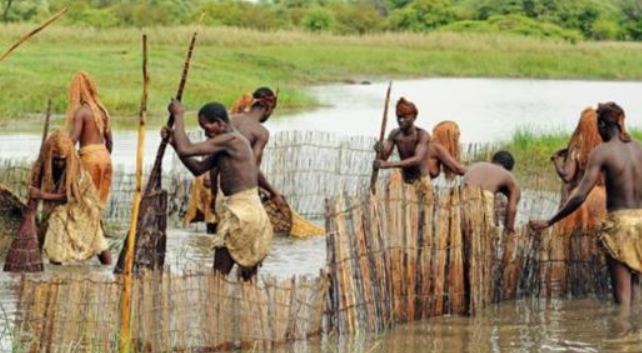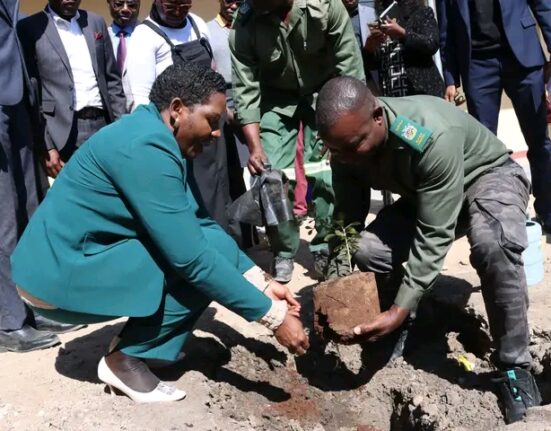The Caprivi region, an area located in the northeastern part of Namibia, holds a unique place in the country’s history. It was the site of the Caprivi Conflict, a turbulent chapter in the post-independence history of Namibia, marked by violence, political unrest, and challenges to national unity. The conflict in the Caprivi, which escalated in the late 1990s, is a crucial yet often overlooked episode in the broader context of Namibia’s transition from a colonial state to an independent and democratic nation. This article seeks to provide an in-depth exploration of the Caprivi Conflict, its causes, key events, and its impact on Namibia’s struggle for unity and national cohesion.
The Historical Background of the Caprivi Region
The Caprivi Strip, a narrow strip of land that stretches across the northeastern edge of Namibia, is bordered by Angola, Zambia, and Botswana. Its history is deeply intertwined with the colonial past of Namibia, having been part of German South West Africa during the colonial era. After World War I and the subsequent defeat of Germany, the region came under South African control as part of South West Africa.
During the colonial era, the Caprivi region, like much of Namibia, was subjected to racial segregation and exploitation. However, the people of Caprivi, predominantly from the Lozi, Subiya, and other indigenous ethnic groups, had a distinct cultural and political identity that set them apart from other Namibian ethnic groups. This unique identity and the region’s geopolitical importance made the Caprivi area a flashpoint for tensions during Namibia’s liberation struggle.
The Path to Independence and the Roots of the Conflict
Namibia gained independence from South Africa on March 21, 1990, after years of resistance against colonial rule and apartheid. The struggle for independence, led by SWAPO (South West Africa People’s Organization), was largely fought on the grounds of racial and territorial justice for the oppressed indigenous populations. Following independence, Namibia’s leaders focused on building a unified, democratic country that transcended its colonial divisions.
However, the Caprivi region presented a unique challenge. The area had always felt somewhat marginalized by the political and economic elites in southern Namibia. While the independence struggle was largely driven by the SWAPO movement, the Caprivi Strip had a history of political ambivalence and even resistance to SWAPO’s leadership. Unlike the rest of Namibia, which was unified under SWAPO’s banner, the Caprivi region had its own distinct political dynamics.
The tensions in Caprivi grew in the years following independence as local groups began to feel sidelined in the new political order. The Caprivi Liberation Army (CLA), an armed group advocating for Caprivi’s political autonomy, emerged in the late 1990s. The group’s primary demand was greater autonomy for the region, and some members called for a full separation from Namibia, envisioning an independent Caprivi State.
The Caprivi Conflict: The Clash of National Unity and Regional Ambition
The Caprivi Conflict came to a head in 1999 when violence broke out in the region. In August 1999, the Caprivi Liberation Army (CLA) launched an attack on Namibian police stations and government installations in the Caprivi Strip. The violent confrontation between the CLA and Namibian security forces led to several deaths and left the region embroiled in chaos. The group was opposed to the central government in Windhoek, which it viewed as a foreign imposition that had ignored the unique political aspirations of the Caprivi people.
The government of Namibia, under President Sam Nujoma, responded forcefully to the attacks, launching a military operation aimed at quelling the uprising. The Namibian Defense Force (NDF) and the police were deployed in large numbers to suppress the insurgents, and a heavy crackdown ensued. The government accused the CLA of engaging in terrorism and sought to bring the perpetrators to justice, while the CLA argued that they were fighting for the legitimate rights and autonomy of the Caprivi people.
As the violence escalated, many residents of the Caprivi region were caught in the crossfire. Displacement, civilian casualties, and human rights abuses occurred on both sides, leading to widespread fear and instability in the region. The international community expressed concern about the violence, but Namibia maintained that it was a necessary step to preserve the country’s territorial integrity and ensure peace.
The Role of Regional Politics and Foreign Influence
One of the factors that contributed to the Caprivi Conflict was the involvement of neighboring countries, particularly Angola and Zambia. The Caprivi Strip’s strategic location along borders with several countries made it a sensitive area in regional geopolitics.
During the conflict, some reports indicated that the Caprivi Liberation Army had received support from groups and individuals based in Angola and Zambia. Angola, which was fighting its own civil war at the time, had a complex relationship with Namibia, especially due to the presence of the South West Africa People’s Organization (SWAPO), which had operated in exile in Angola during the liberation struggle. The political dynamics of southern Africa, coupled with the broader struggle for control over the region, provided a fertile ground for external influence in the Caprivi conflict.
The Namibian government accused its neighbors of harboring insurgents and supporting the rebellion, although this was not conclusively proven. However, the international context in which the conflict unfolded – marked by political tensions and the fallout from decades of armed struggle for independence – added to the complexity of the situation.
The Aftermath: Reconciliation and Efforts to Preserve Unity
By the early 2000s, the government had regained control of the Caprivi region, and the immediate military conflict subsided. However, the wounds of the conflict lingered. Thousands of Caprivians were arrested, and many were charged with treason, accused of being members of the Caprivi Liberation Army or of supporting the insurgency.
The Namibian government, while succeeding in maintaining territorial unity, faced the difficult task of addressing the grievances of the Caprivi people. Efforts were made to promote national reconciliation and to integrate the Caprivi region into the broader fabric of Namibian society. The government, led by SWAPO, emphasized national unity and stability, seeking to foster a sense of belonging among the Caprivi people within the wider Namibian state.
In the years following the conflict, the government initiated dialogues with local leaders and communities to address their concerns and promote development in the region. However, questions of autonomy and regional identity remain sensitive topics in Caprivi, and some continue to advocate for greater recognition of the area’s unique cultural and political status.
Namibia’s efforts to promote reconciliation have been complicated by the political and ethnic tensions in the Caprivi Strip. Many Caprivi residents continue to feel marginalized by the central government, and the legacy of the conflict has left divisions that are not easily healed. Yet, the country’s commitment to peace, democracy, and national unity remains a guiding principle.
The Caprivi Conflict in the Context of Namibia’s National Unity
The Caprivi Conflict was a significant challenge to Namibia’s post-independence unity, but it also served as a reminder of the complexities that arise when building a multi-ethnic and multi-regional nation. Namibia’s leadership had to strike a delicate balance between acknowledging regional identities and ensuring the stability and cohesion of the country as a whole.
The country’s efforts to address the conflict in the Caprivi region reflect the broader struggle of many African countries to unite their diverse peoples while managing regional and ethnic tensions. As Namibia moves forward, it continues to grapple with the challenge of nation-building—seeking ways to create an inclusive society where all regions, including Caprivi, feel valued and integrated into the nation’s broader political and economic framework.
The Caprivi Conflict remains a somber reminder of the challenges Namibia faced in the early years following its independence. While the conflict itself was a tragic episode in the country’s history, it also highlighted the resilience of Namibia’s democratic institutions and its determination to remain united despite the pressures of internal strife and external influences. Namibia’s path forward will require continued efforts to build national unity, promote inclusive development, and ensure that all regions, including Caprivi, play a vital role in the future of the country. The lessons learned from the Caprivi Conflict will undoubtedly shape Namibia’s journey toward a more unified and peaceful future.
Join 'Namibia Today' WhatsApp Channel
Get the breaking news in Namibia — direct to your WhatsApp.
CLICK HERE TO JOIN












